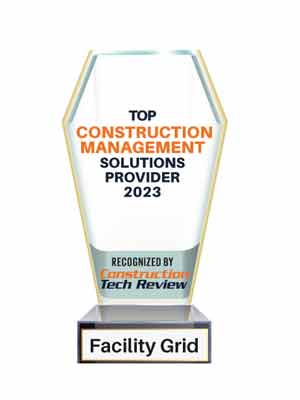THANK YOU FOR SUBSCRIBING
 Eric Forman, CEO and President, Facility Grid
Eric Forman, CEO and President, Facility GridHowever, too often, project executives and general contractors lack insight into the exact status of these installations and find themselves surprised by delays and other issues. The result of these surprises ranges from a late project to financial penalties and reputational damage. The risk is significant, yet today many contractors still fail to embrace technology that can not only provide real-time building asset status information, but also analytics that can optimize and improve their processes and results.
Current Approaches Leave Teams at Risk
Managing today’s complex building requirements as well as multiple trades and teams, contractors are challenged to accurately and promptly report project progress. Too often, critical information is trapped in spreadsheets, email, and paper files leaving teams exposed to surprise issues, delays and costly rework. Manual tracking, duplication of effort on administrative tasks and miscommunication consume valuable time and resources. Not to mention, the time spent trying to gather all the current documentation, images and sign-offs for turnover.
While some teams employ construction management software, these solutions generally lack the features and functionality necessary to track at the building asset level, leaving teams in the dark as to the real-time status of equipment and systems. These traditional solutions focus on document management, requisitions, change orders, and financials, not status tracking at the asset level.
Technology that Changes the Game: Facility Grid Operational Readiness Software
Operational Readiness software complements construction management solutions and replaces spreadsheets, email and paper by providing a centralized repository for all of the information related to building assets. Eliminating redundancy and administrative overhead, Operational Readiness software enables users to track the progress of building systems and equipment, monitor activities status to schedules and capture asset documentation efficiently. All key stakeholders can access the system based on permissions and see the current status of an asset. Users in the field can scan a QR code and instantly access the latest information on a piece of equipment, update it and share it with the rest of the team. Checklists, pre-verification tests, functional tests, inspections, quality checks, etc. are all captured and stored in a central repository available to all permissioned team members no matter where they are globally. And, when it’s time to turn the building over to its owner, all of the information is ready in one place and can be used to support ongoing operations.
-
Facility Grid’s Operational Readiness real time visibility allows project teams to receive timely updates on progress, share potential impacts and make critical decisions regarding project timelines and activities.
Next Level: Analytics
An additional benefit of embracing Operational Readiness software is the opportunity to bring analytics into the process. Analytics, and now artificial intelligence (AI), are emerging as key tools to help optimize processes, address cost and schedule overruns, facilitate resource allocation and improve safety and efficiency on construction projects. By leveraging technology and standardizing processes from installation through to turnover and capturing asset data, construction teams can optimize processes, identify patterns in project data as well as risks, opportunities and lessons learned. Access to these insights will enable teams to bid smarter, make better in-project decisions, and more effectively deploy and use resources.
Now is the time to embrace Operational Readiness software. Find out more about Operational Readiness and Facility Grid at www.facilitygrid.com.
| Share this Article: Tweet |

 Copyright © 2025 All Rights Reserved | by:
Copyright © 2025 All Rights Reserved | by: Construction Tech Review
| Subscribe | About us | Sitemap| Editorial Policy| Feedback Policy




